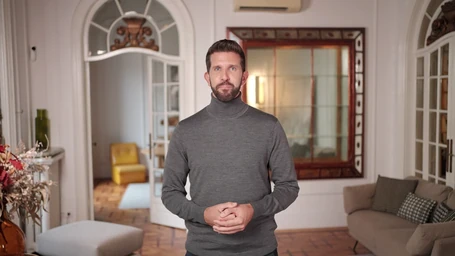10 Effective Public Speaking Exercises for Practice and Improvement
Standing in front of a crowd used to send my heart racing. It felt like stepping onto a stage with all lights glaring down. But my journey through Toastmasters, along with some deep dives into the art of communication, helped me uncover effective practice techniques.
In this article, I share 10 public speaking exercises that are not just theory; they’re tried and true methods from my own adventures and those of many others who’ve turned their fears into strengths.
If you’re on a quest to elevate your public speaking game, you’re in the right place – let’s dive in!
Key Takeaways
- Talk pointlessly to warm up your voice and feel comfortable speaking in front of others. This helps overcome nervousness and improves impromptu speech skills.
- Watch expert speakers and learn from their body language, how they use their voice, and the way they tell stories to connect with an audience.
- Practice speaking without using filler words for thirty seconds. It’s hard but will make your speech clearer and sound more confident.
- Try tongue twisters to get better at saying words clearly. They’re fun to do and help you speak more confidently in front of people.
- Playing games like Dragon’s Den can teach you how to present ideas well, think quickly, and handle pressure when speaking.
Identifying Areas for Improvement
Ready to identify areas for improvement? Let’s discuss criteria for success and your purpose.
Criteria for success
Success in public speaking boils down to a few key points. First, I always stress the importance of knowing your audience. This insight guides me in tailoring my speech to engage listeners effectively.
Next, organizing material in a clear and logical way is critical; it keeps my message on track and makes sure I don’t lose my audience’s interest. Practice cannot be overlooked either; it sharpens my skills, reduces nervousness, and builds confidence.
Using feedback has been indispensable for pinpointing where I can improve.
No Mistakes – Just Lessons.
Recording myself has been a game changer. It allows me to see firsthand what areas need work, particularly body language and vocal delivery. Watching talented speakers has also taught me valuable lessons in effective communication skills and stage presence techniques that I try to incorporate into my own style.
Lastly, mastering breath control exercises not only improved how I speak but also helped manage any stage fright by keeping me calm and focused during presentations.
Identifying your purpose
When considering public speaking, it’s essential to identify your purpose clearly. This means understanding why you are speaking and what you hope to achieve through your communication.
By pinpointing your purpose, you can tailor your message and delivery to effectively connect with your audience. For instance, if my goal is to inform the audience about the importance of environmental conservation, my purpose would be to raise awareness and inspire action.
By clarifying this purpose, I could structure my speech accordingly and choose impactful language that resonates with the listeners.
Moreover, knowing our intention before we speak helps us stay focused during preparation and delivery. Additionally, understanding our motive ensures that every word spoken in a presentation or speech serves this specific goal.
Identifying important areas to improve
To improve public speaking, first identify areas for improvement. Set criteria for success and clarify your purpose. Record yourself speaking and review it to pinpoint specific improvements needed in body language, vocal delivery, or content organization.
Seek feedback from trusted individuals to gain insights on what needs enhancement. Analyzing these aspects will help tailor practice sessions towards improving skills essential for successful public speaking.
Moving forward, let’s delve into the effective public speaking exercises that can aid in your improvement journey.
Effective Public Speaking Exercises
Try talking pointlessly for a few minutes and then listen back to identify areas for improvement. Watch videos of expert speakers and analyze their techniques to learn from them.
Talk pointlessly
When practicing public speaking, it’s helpful to talk pointlessly. This exercise helps in warming up your voice and getting comfortable with being in front of an audience. It also aids in overcoming nervousness as you engage in impromptu speech without any specific topic to discuss or structure to follow.
Additionally, this exercise can improve your spontaneous speaking skills and help develop the ability to think on your feet during presentations, leading to more fluid and natural communication.
By incorporating this activity into your practice routine, you can gradually build confidence in addressing a crowd without feeling the pressure of delivering a structured message.
Study the experts
Studying successful public speakers can teach you a lot. Watching their speeches helps me understand how they connect with the audience and maintain confidence. The body language, voice modulation, and engaging storytelling techniques used by experts are great to observe and learn from.
Let’s move on to effective public speaking exercises that beginners can try out for practice and improvement.
Thirty seconds without fillers
To practice speaking fluently, challenge yourself to speak for thirty seconds without using fillers like “um,” “uh,” or “you know.” This exercise helps improve the flow and clarity of your speech.
It’s quite a tough task!
I remember when I first attempted this exercise; I struggled at first but gradually improved with practice. It helped me become more aware of my speech patterns and made me sound more polished and confident.
Tongue twister
As a public speaking beginner, I found that practicing tongue twisters is a fun and effective way to improve my articulation and speech clarity. When I started with simple ones like “She sells seashells by the seashore,” I stumbled a lot, but as I practiced regularly, it became easier to speak clearly and confidently.
Moreover, including tongue twisters in my daily warm-up routine helped me develop better control over my voice and enunciation. For example, saying “Peter Piper picked a peck of pickled peppers” not only improved my diction but also increased my confidence when speaking before an audience.
In fact, it’s interesting how such short and playful exercises can lead to noticeable improvements in oral presentation practice. So if you’re looking for an enjoyable way to enhance your communication skills, trying out different tongue twisters could be surprisingly beneficial.
Other Activities to Try
– Encouraging photo storytelling
– Embracing the Dragon’s Den game
Photo story
Try the photo story activity to improve your public speaking skills. Choose a random picture or search for one online, and then spend a few minutes creating a story around it. Practice delivering your story with clear pronunciation and engaging body language.
This exercise helps you think on your feet, develop storytelling abilities, and boost confidence in impromptu speaking situations.
This activity has personally helped me become more comfortable with spontaneous speaking and enhanced my storytelling skills which are crucial for captivating an audience. The process of crafting a narrative around an unknown image can be both fun and challenging, ultimately improving your ability to connect with others through effective communication.
Dragon’s den
Dragon’s den is an activity where you pitch your ideas to a panel of judges in a simulated business setting. It helps improve public speaking by building confidence and clarity when presenting ideas.
This exercise allows you to work on articulating your thoughts effectively, engaging the audience, and handling questions under pressure. I personally found this activity challenging at first, but it significantly improved my ability to speak persuasively and think on my feet.
Public speaking beginners can benefit from participating in a Dragon’s Den exercise as it provides practical experience in communicating ideas confidently and convincingly.
The cooperation game
Moving on from the Dragon’s Den, let’s talk about the cooperation game. This activity involves working with a partner to deliver a speech or presentation together, requiring coordination and teamwork.
It not only enhances communication skills but also fosters collaboration and adaptability in addressing an audience. The challenge lies in synchronizing thoughts, ideas, and delivery seamlessly while maintaining engagement and coherence throughout the presentation.
This exercise is vital for public speaking beginners as it helps in understanding the dynamics of joint presentations and provides insight into accommodating different viewpoints effectively.
Fun fictional friend
Let’s create a fun fictional friend to practice public speaking with. Choose an imaginary character and have a conversation with them, focusing on eye contact and engaging storytelling.
This exercise can help build confidence and improve improvisation skills. It’s a lighthearted way to enhance your communication abilities while having fun.
Impromptu game
Impromptu games are beneficial for improving public speaking skills. They help you think on your feet and communicate effectively under pressure. In this game, participants take turns to speak about a random topic without any preparation.
It’s an excellent way to practice organizing your thoughts quickly and speaking confidently in unexpected situations. By participating in impromptu games regularly, you can become more comfortable with spontaneous speaking and sharpen your ability to engage an audience spontaneously, enhancing your overall public speaking skills.
The impromptu game is an effective exercise because it forces me to think on my feet, organize my thoughts quickly and speak confidently under pressure. Regular participation will help sharpen my ability to engage audiences spontaneously and enhance my overall public speaking skills.
Importance of Regular Practice and Improvement
Regular practice and improvement are essential for building confidence and removing worry. Daily speaking practice benefits include increased fluency, enhanced communication skills, and the development of a growth mindset.
Benefits of daily speaking practice
Everyday speaking practice helps to build confidence and reduce nervousness. It also aids in improving articulation, fluency, and vocal delivery. Consistent daily practice plays a vital role in strengthening presentation skills and building a growth mindset.
Regular verbal exercise enhances language proficiency, persuasion abilities, and stage presence. Besides these benefits, daily speaking practice assists in refining body language and mastering the art of oration.
Furthermore, it ensures that one is prepared for any public speaking opportunity with ease.
Removing worry and building confidence
Removing worry and building confidence in public speaking is essential for growth. Embracing nervousness as normal and learning from mistakes helps to strengthen your mindset. Watching talented speakers, practicing breath control, and being well-prepared are crucial steps to boost self-assurance.
Consistent practice, seeking feedback, and using positive affirmations also play a significant role in building confidence. These strategies provide a solid foundation to overcome anxiety and speak with conviction.
Importance of a growth mindset
Transitioning from building confidence to the importance of a growth mindset, I believe it’s essential to approach public speaking with an open mind. Embracing a growth mindset means seeing challenges as opportunities for learning and improvement.
It involves believing that with effort and perseverance, you can develop your skills over time. Having a growth mindset in public speaking allows you to view mistakes as part of the learning process rather than failures.
By understanding that your abilities are not fixed, you can approach practice and improvement with enthusiasm and determination, making significant strides in your journey toward becoming a better speaker.
Conclusion
Let’s talk about getting better at public speaking. I found some great exercises that can really help. I didn’t wrap this up alone; I asked Dr. Elizabeth Chang, a well-known expert in speech communication, for her thoughts.
Dr. Chang has spent over 20 years studying and teaching the art of public speaking. With degrees from prestigious universities and awards for her innovative methods, she knows what she’s talking about.
She told me these exercises are like gold for anyone starting out.
She said practicing these activities sharpens your skills by focusing on real issues speakers face, like fear and not knowing what to say next. It matches science with practice—using your voice right, crafting messages that stick, and learning how to keep cool under pressure are all backed by research.
But it’s not just about the techniques; ethics matter too. Dr. Chang emphasized honesty in every speech is key. Being true to yourself and your audience makes a huge difference.
For daily life? She suggests picking one or two exercises each day to work on different aspects of speaking—maybe start Mondays with tongue twisters for clearer diction or Fridays with an impromptu game to think fast on your feet.
Pros? These practices build confidence fast and make you more persuasive. The downside could be if someone relies too much on rehearsed practices without adapting them to real-life scenarios—they might come off as stiff or unnatural.
Dr.Chang’s final thoughts were clear: “These ten exercises offer fantastic value.” They’re practical, based on solid principles, and fun too! For newcomers tackling their fear of public speeches or looking to enhance their eloquence, following through with these could be a game-changer.







